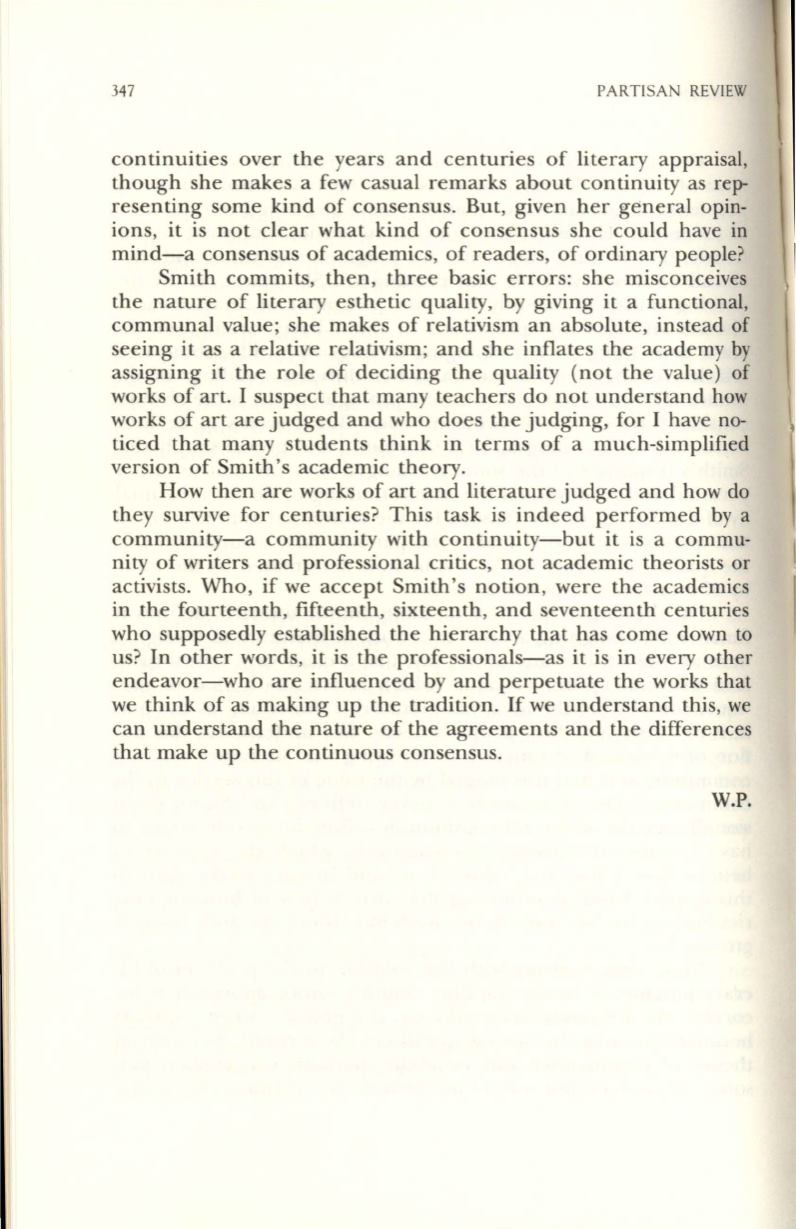
347
PARTISAN REVIEW
continmt1es over the years and centuries of literary appraisal,
though she makes a few casual remarks about continuity as rep–
resenting some kind of consensus. But, given her general opin–
ions, it is not clear what kind of consensus she could have in
mind-a consensus of academics, of readers, of ordinary people?
Smith commits, then, three basic errors: she misconceives
the nature of literary esthetic quality, by giving it a functional,
communal value; she makes of relativism an absolute, instead of
seeing it as a relative relativism; and she inflates the academy
by
assigning it the role of deciding the quality (not the value) of
works of art. I suspect that many teachers do not understand how
works of art are judged and who does the judging, for I have no–
ticed that many students think in terms of a much-simplified
version of Smith's academic theory.
How then are works of art and literature judged and how do
they survive for centuries? This task is indeed performed by a
community-a community with continuity-but it is a commu–
nity of writers and professional critics, not academic theorists or
activists. Who, if we accept Smith's notion, were the academics
in the fourteenth, fifteenth, sixteenth, and seventeenth centuries
who supposedly established the hierarchy that has come down to
us? In other words, it is the professionals-as it is in every other
endeavor-who are influenced by and perpetuate the works that
we think of as making up the tradition. If we understand this, we
can understand the nature of the agreements and the differences
that make up the continuous consensus.
W.P.


